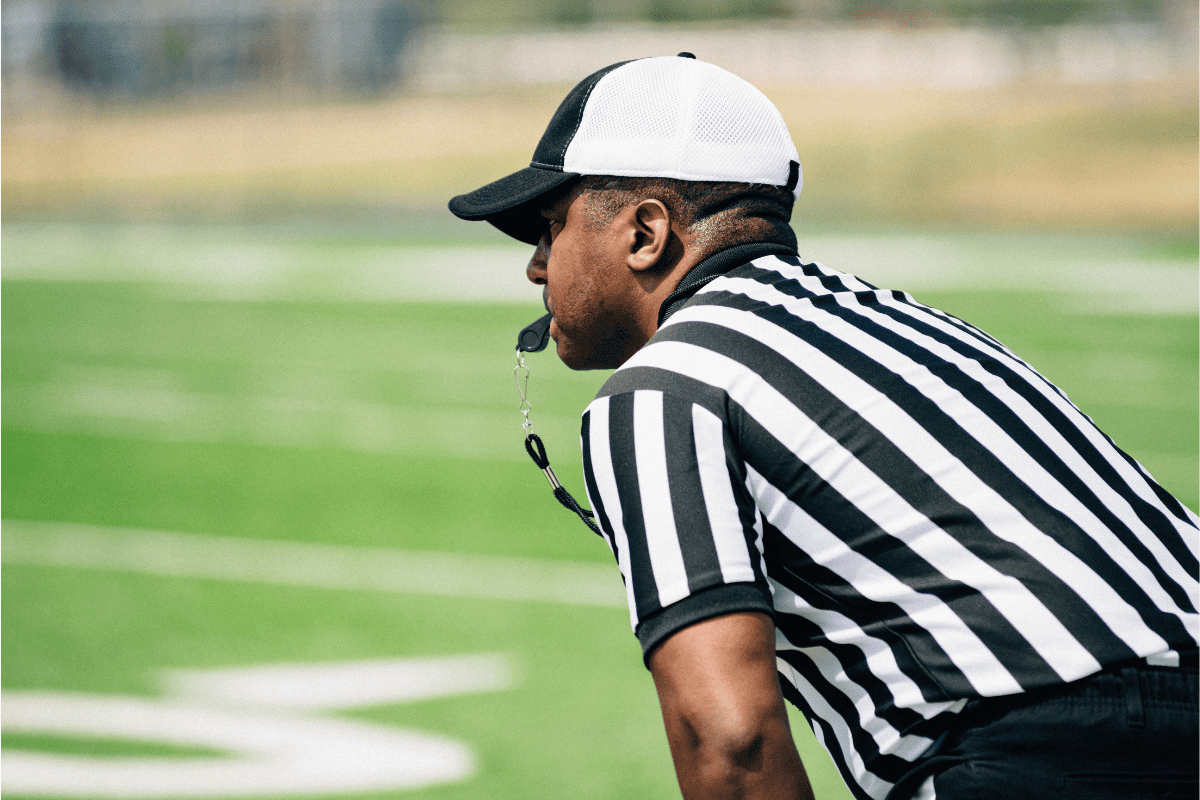What is Tripping in Football? (Rules 101)
Whether you’re a die-hard fan who screams at every touchdown or someone who’s just here for the halftime snacks, you’ve probably noticed that American football is chock-full of rules.
Some are obvious, and some… well, not so much. Today, let’s tackle (pun intended) one that might have you scratching your helmet: the tripping penalty.
Tripping in American Football: What’s the Deal?
So, you’ve heard the ref call it, but what exactly does “tripping” mean on the football field?
Breaking Down the Basics
In the context of football, tripping is when a player uses their leg or foot to stop an opponent from moving forward. It’s not about accidentally stumbling over someone’s shoe—it’s about purposefully trying to take someone down without using your hands or arms.
Accidental vs. Intentional: It’s All in the Intent
Now, here’s where things get a tad tricky. Sometimes, legs get tangled up in the heat of the moment. It’s football, after all! But refs are trained to spot the difference between a genuine accident and a player slyly sticking out a leg to trip an opponent. Intent is the name of the game here.
Tripping vs. Other Penalties: A Gridiron Showdown
Alright, gridiron gang, let’s keep this ball rolling. We’ve tackled what tripping is, but how does it measure up against other penalties? Let’s break it down.
Tripping and Its Fellow Flag-Bringers
While tripping might feel like a minor hiccup in the game of football, it holds its own unique space. Here’s a quick side-by-side with some other familiar flags:
- Holding: This is when a player grabs an opponent, other than the ball carrier, with their hands or arms. Unlike tripping, this is all about what you do with your upper body.
- Pass Interference: Ever seen a player prevent an opponent from catching the ball? That’s pass interference. It’s a world away from using your leg to trip someone up.
- Face Mask Violations: This one’s when a player grabs another player’s face mask. It’s dangerous and, like tripping, can lead to some serious yardage penalties.
Why is Tripping Even a Penalty?
You might be thinking, “Why all the fuss about a little leg action?” Well, tripping can be dangerous. It can lead to injuries, and it’s not in the spirit of fair competition. The game’s all about skill, not sneaky footwork to bring someone down.
Read More:
Facing the Music: Consequences of Tripping
So, a player’s been flagged for tripping. What now? Spoiler: it’s not just a friendly warning.
Yardage Setbacks
The most immediate consequence? Tripping is considered a personal foul and comes with a 15-yard penalty. If the penalty was on the defense then it also comes with an automatic first down.
This can be a real game-changer, especially if the game’s a close one.
More Than Just Yards: Ejections and Fines
While not as common, if a player is repeatedly flagged for tripping or if the act is deemed particularly malicious, they might be ejected from the game. And the league? They might just slap them with a fine. Ouch, both for the player and their wallet!
Preventing Tripping: Coaching, Discipline, and Awareness
Alright, team! We’ve dissected the tripping penalty and its repercussions, but what’s being done to prevent it? After all, nobody wants those yellow flags raining down, right? Let’s huddle up and discuss.
The Coach’s Playbook
First up in the anti-tripping arsenal? Coaches. They drill players on proper techniques, ensuring everyone’s using their hands and body correctly. By emphasizing safe and effective playing methods, coaches reduce the chances of players resorting to tripping.
Player Discipline: It Starts on the Practice Field
It’s not all on the coaches, though. Players have to exercise discipline. That means practicing good habits, being aware of their movements, and resisting the urge to trip, even in high-pressure moments.
Remember, a split-second decision can have game-changing consequences!
Awareness is Half the Battle
Being mindful of one’s surroundings on the field is key. Players need to be aware of where their teammates and opponents are at all times. By being in tune with the game’s flow, players can anticipate movements, reducing accidental entanglements that could be mistaken for tripping.
Conclusion
Tripping, while just one of many penalties in the game, carries its own set of challenges and consequences. It’s about more than just yardage; it’s about safety, fair play, and the spirit of the game.
Whether you’re a player, coach, or a fan cheering from the stands, understanding tripping is crucial. It reminds us all of the importance of playing with skill, integrity, and respect for the game and its players.
So, next time you’re watching a game and see that yellow flag fly, you’ll know the ins and outs of what might be going on. Here’s to fewer penalties and more fantastic, fair football!

